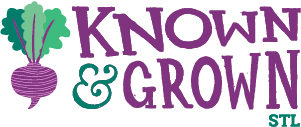
While all Known & Grown farmers can be distinguished from conventional farmers by their commitment to environmentally sounds farming practices, some farmers go above and beyond to protect and enhance our environment. We look particularly at practices that protect and conserve water, contribute to clean air, build soil and sequester carbon, promote biodiversity, and conserve energy. Those farms are identified by the Golden Beet designation on their Farmer Profile page and are exceptional stewards of our shared environment.
In order to gain the Golden Beet status, crop and livestock producers must employ all or most of the following practices in addition to the required practices:
CROP PRODUCERS
- Integrated Pest Management
- Pollinator and beneficial insect habitat
- Bird and bat habitat
- Produce compost on site
- Use of organic mulches
- Use Certified Organic potting mix, or produce their own potting mix or purchase from another K&G farm
- Use drip irrigation, rainwater collection, or other water management practice such as key line designs and berm and swale systems
- Use organically produced seed and/or save seed
- No-till or minimal till
- Minimize use of agricultural plastics, especially single-use plastics
- Control weeds with heavy mulching or hand weeding
- Companion planting or inter-cropping
- Use of cover crops
- Permanent field borders with deep rooted perennials
- use of alternative energy such as passive or PV solar, wind, draft animals, biofuels, and geothermal
LIVESTOCK PRODUCERS
- Integrated Pest Management
- Multi-species grazing plan to utilize forage and break parasite lifecycles
- Rotational, strip, or mob grazing system to improve pasture and sequester carbon
- Nutrient Management Plan
- Livestock fenced out of waterways and streams
- Forage and biomass planting
- Use of cover crops
- Raise heritage breeds
- Supplemental diets come from Certified Organic or non-GMO feed
- Grow their own hay, grain, or fodder
- Pollinator and beneficial insect habitat
- Bird and bat habitat
- Permanent field borders with deep rooted perennials
- use of alternative energy such as passive or PV solar, wind, draft animals, biofuels, and geothermal


